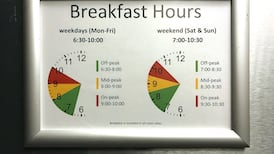The Government has fixed a target of building 25,000 homes in 2021. On top of an output of 18,000 for 2020, a year of pandemic crisis, this new target is good news, and it will be even better if it is reached or exceeded.
Massive progress on homebuilding is a political imperative. We need to have a sustained annual rate of at least 28,000 if we are to meet our housing needs.
But the term “home” can mean very different things to different people. It spans the spectrum from a modest bedsit or shared living unit all the way to a large one-off house on its own grounds. And in between are all types of residence including suburban semi-detached houses, duplexes, low-rise and high-rise apartments.
The term also includes owned homes with or without mortgages, shared homes, rented homes with little fixity of tenure, and social housing with de facto lifetime tenancies.
There are many economic models for the provision of homes. In the 1950s, local councils built huge social housing estates while Irish Life built some large unfurnished apartment complexes for more upmarket long-term letting. At the same time, rent restriction law made the private letting of unfurnished housing grossly unjust to the landlord. It was almost impossible to keep premises in decent repair and condition.
It is not for want of alternative models that our political class has struggled to deliver results. We know the pitfalls of some of the options. But do we learn from them?
If we want to become a nation of renters (and there is no discussion on that question), we have to ask from whom we are to rent. If we expect non-State investment in homes for rent, we have to develop models that will give renters some security and owners a realistic return on the actual value of their investment.
Should rents be more akin to mortgage repayments, which give the lender a specified annual return without regard to changes in market rents, particularly surges in rent occasioned by housing shortages?
If a house is let to a tenant with long-term security, should it matter in relation to rent that all the other houses on the same road have trebled in value? If a landlord is liable for repairs and maintenance, does it matter that the building has become so much more valuable than its current rental value that such expenditures become irrational? This was the issue that lay at the heart of the Rent Restrictions Act being found unconstitutional in 1980.
But when rents explode as they have done, legislative protection becomes a political inevitability. The landlord class has little political leverage in such circumstances. The pendulum swings against it.
If we are serious about building beautiful, living cities, we need bodies with the powers to make that happen
When high rents combine with low capacity for the younger cohort to buy rather than let, a perfect political storm gathers. The result is alienation and a sense of victimhood and exploitation.
Add in the arrival of foreign investment funds in the financial wake of the vulture funds and allow them to buy up homebuilding developments from the drawing board, and a sense of hopelessness grips an entire generation of voters.
Radically different
Welcome though the Government’s target for expanded homebuilding may be, it will not match the strength of feeling that something radically different is now needed.
We are told that the drafting of a Land Development Agency Bill is under way. But all the signs are that this body is mainly intended to facilitate the provision of existing publicly owned land to private developers. Yes, there is publicly owned under-used land that could be used for homebuilding. That is not the issue. Existing public bodies could have secured its development under existing laws.
The real problem has been on the cosy political and administrative axis of paralysis between the Custom House and the management in city and county halls.
South inner city Dublin is an architectural, social and planning nightmare. Waiting for private developers to assemble sites and then permitting them to erect ugly, discordant developments with no sense of street, precinct or community is disastrous.
The new Strategic Housing Development process makes things even worse. High-rise, reduced standard apartment blocks are to be thrown up north and south of the Liffey on handkerchief sites owned and chosen by developers without any semblance of decent urban planning.
We are planning for ugly and dysfunctional. It’s not just the inner city. Look up the plans for the developments on the site of O’Rahilly’s house or at Eglington Road and you will be shaken.
If we are serious about building beautiful, living cities, we need bodies with the vision and the powers to make that happen.









